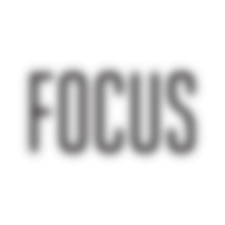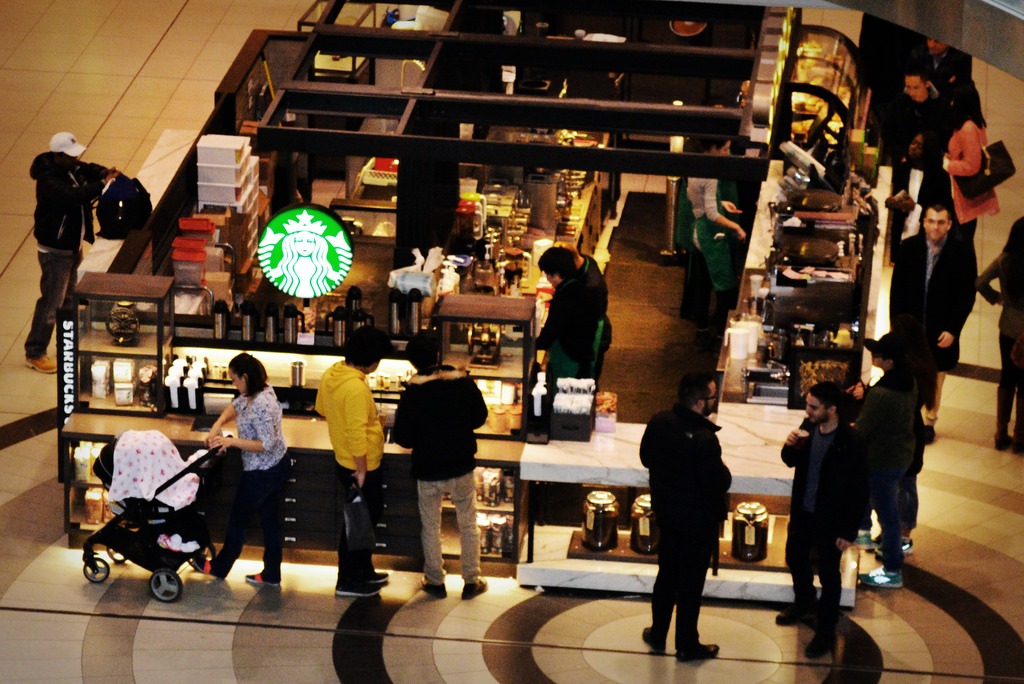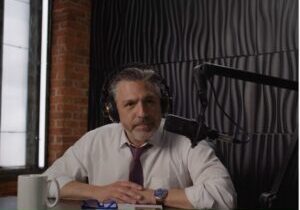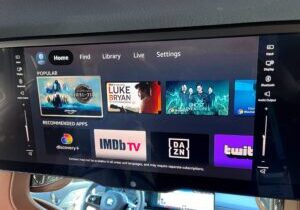The worlds of media and marketing are roiling. Consumers and advertisers alike are turning to new platforms, as old media continues to feel pressure from competitive fragmentation and marketer needs for accountability for their ad spend. The landscape is sure not what it used to be.
These are the sticky moments where most brands could use a “fixer.” And that’s when I think of the shadowy character in Pulp Fiction played brilliantly be Harvey Keitel – Mr. Wolf. Whenever there was trouble, Winston Wolfe would drop whatever he was doing, swoop in, and get things cleaned up – with calm, with precision, and of course, with cool. Ah, if we only had Mr. Wolf to swiftly and effortlessly take care of our messes.
 In the business world, it works differently and not as linearly. When a brand loses its focus, its purpose, and fails to adapt to changing needs and tastes, that’s when the researchers come marching in to conduct an audience analysis. They’re not “fixers” per se, but at best “identifiers” who can point to a problem. Oftentimes, it is then up to the creatives and the innovators to solve the puzzle. In this regard, radio broadcasters are no different than other brands in their need to nail problems, find a solution, and do the fix.
In the business world, it works differently and not as linearly. When a brand loses its focus, its purpose, and fails to adapt to changing needs and tastes, that’s when the researchers come marching in to conduct an audience analysis. They’re not “fixers” per se, but at best “identifiers” who can point to a problem. Oftentimes, it is then up to the creatives and the innovators to solve the puzzle. In this regard, radio broadcasters are no different than other brands in their need to nail problems, find a solution, and do the fix.
But these days, that’s usually not enough. It’s one thing to pinpoint inefficiencies, friction, and screwups. It’s another to address the problems and effectively solve them. And then it’s the final piece of the pie that is most elusive – convincing consumers they’ve been heard and that your brand has effectively fixed the problem. In most cases, it’s about turning around their perceptions and communicating that improvements have been made. In other words, problem solved.

That last piece – do users feel like a brand has solved the problem is often a great unknown? And yet, it never stops brand managers from doing their due diligence and trying to fix whatever was wrong. And then come the questions (and often another research study) in an attempt to assess whether users noticed the improvements.
The problem is, in a fast-changing environment with more players than ever, brands are under the gun to show improvement. So, let’s look at a couple of cases in point – outside of radio.
And we’ll start with a massive but troubled consumer brand, Starbucks. I wrote a blog post (“Fixing Starbucks, Fixing Radio”) back in May, addressing a discouraging quarterly investment report, followed by serious concerns expressed by former CEO, Howard Schultz.
Since then, Starbucks has been hard at work, from its CEO Laxman Narasimhan, right down to the average barista making Frappuccinos. So, how do you turn around a “disappointing” (Narasimhan’s word) performance, not just for the current quarter, but for at least the next few years?
Narasimhan, right down to the average barista making Frappuccinos. So, how do you turn around a “disappointing” (Narasimhan’s word) performance, not just for the current quarter, but for at least the next few years?
First, Starbucks did their homework, coming to the conclusion their two big issues are “long wait times and product unavailability.” The prescription? Take action, scrap the current system of filling orders and try something new.
In this case, Starbucks will unveil system-wide changes that dictate altering the current way in which orders are filled. The new concept – the Siren Craft System – is a big fat experiment based on employee feedback. Will it work? That’s the great unknown, but the company realizes it must do something if its fortunes have any chance of turning around.
Another Starbucks move is the designation of an in-store quarterback, known as a “peak play caller.” This person will use data to determine when and where stores will suffer from gridlock and prevent it from happening in the first place. In essence, this person will be calling audibles to prevent the types of disasters many Starbucks stores experience when in-store, mobile, and drive-thru orders pile up during peak times.
These changes go into effect by the end of July. A story in Inc. by Bill Murphy, Jr. credits Starbucks with taking sizable risks to mitigate its sales and profitability. He also gives them props for what Murphy calls a “welcome trend” where troubled companies now making changes more transparent – “sharing the ways they’re tried to improve efficiency and processes.”
Let’s segue to an industry in even greater trouble than the gourmet coffee segment – newspapers. In recent blog posts, I’ve talked about some of the barriers news media organizations have been facing, including public radio’s NPR News stations.
During this time, it has been difficult for many news brands to regain their footing, following the effect of Trump, the pandemic, and a news environment that shows no end to the churning – almost right up to the publication of today’s blog post.
Thinking about the storylines of just the past several days, and we have a highly volatile landscape. And all of this is complicated by consumers getting their “news” from a growing variety of sources – many of them unconventional according to traditional journalistic standards.
But the rules have long been shredded, as media brands continue to grapple with how they not only define news, but how, when, and on which devices they deliver it. The news of President Biden pulling out of the 2024 election on Sunday afternoon surprised his staff and some of his family members. For many news brands, it was an unexpected “all hands” call where some stepped up, while others sputtered.
Yesterday, Nieman Lab published a brilliant feature story illustrating how “breaking news” coverage continues to fragment, making it especially challenging for legacy brands to keep up, much less define their “rules of the road.”
In “BREAKING: The ways people hear about about big news these days; ‘into a million pieces'” says source. It’s a reminder that social media and memes have nearly usurped mainstream media coverage (often consumer generated) that are likely more seen and recalled by consumers than conventional coverage.
Reporter Joshua Benton dutifully compiled all this coverage of Biden’s decision. Of course, the tone was set when Biden took to Twitter/X to break his own news. Note the story – packaged in a letter to the American people – was not sent out in a press release to The New York Times, USA Today, or Reuters.
— Joe Biden (@JoeBiden) July 21, 2024
And then “memology” took over as Americans scattered on a Sunday afternoon got Biden’s news in more ways than Benton or any of us can count. And like virtually every news story these days, the humor, snark, irony, and eventually vitriol don’t take long to kick in.
Joe Biden is retiring so he can focus on his Guilty Gear career. pic.twitter.com/NfNoC2gHyZ
— Ultima – It’s EVOver (@UltimaShadowX) July 21, 2024
In radio circles, the conversations and questions started yesterday morning. Did NPR start carrying coverage of the story not long after it broke? (They did.) Did stations start carrying NPR’s feed? (Some did, some didn’t, probably based to some extent on whether there was anyone in the building who could switch over to it?) For those who took NPR’s content, did stations send out push alerts to notify their audience about the story and live coverage? (Hard to say, but most did not.)
To this last point about “push,” Benton publishes a tweet in the Nieman Lab story that shows a list of scores of notifications that went out around the story from news organizations, illustrating just how much bombardment there is when a big story breaks.
What does this mean for news radio stations – commercial or public – trying to find their way through the morass? As I’ve covered here throughout 2024, most NPR News station ratings are down, incentivizing many to try to get to the bottom of the problem. Is it work from home reverberations from COVID, the aging radio audience, all this news fragmentation, digital disruption, a combination of these things – or something else entirely?
Smart news organizations are in various stages of trying to attack this problem – often with the goal of creating innovative news coverage that helps to better define the journalistic approach.
We can expect more and more news entities to “fix” their systems and structures to meet their own needs and strategic challenges.
One last point I alluded to earlier – whether you’re Starbucks or NPR, it’s not just about Mr. Wolf coming in for the cleanup.
It is a matter of communicating these changes to an on-the-move, busy audience that isn’t necessarily going to get the memo. In the case of Starbucks, the company has connected with the media via PR companies and press releases to explain their changes.
But have either reached out to the audience in any meaningful way? In the case of Starbucks, I have seen no indication there’s a new, more efficient system in place. It’s not on the app or on the website. Are consumers supposed to connect the dots themselves?
And that brings us back to radio. Many stations effectively go through the process of researching their problems, strategizing and implementing key changes, only to fall short in the perception department.
When programmers drop an ’80s song and replace it with one from the ’90s, consumers aren’t likely to pick up on what stations are putting down. Waiting for Nielsen to reward a station with higher ratings based on subtle moves here and there is a fool’s game.
The good old days of media scarcity when there was just radio, TV, and print meant a format change or even a programing shift had some likelihood of getting noticed.
Given the media noise today, communicating details of “the fix” is essential if a station or network is to truly benefit from what is often a trying and laborious process.
Why are you doing this?
What problem are you solving?
When does it go into effect?
What’s in it for me?
These are the questions brands have to address in their communiques with their customers.
For Mr. Wolf and his clientele, it was about doing “the fix,” and hoping to keep it stealth and inconspicuous.
The last thing radio needs right now is to stay under the radar. If we’re going to invest the time, the expense, and the stress to “fix” what needs attention, getting credit for it is table stakes.
So, it’s simple.
Identify the problem. Do the research. Brainstorm solutions. Decide on the best one. Implement it. (And the final piece of the puzzle) Communicate it. 
Rinse. Repeat.
Originally published by Jacobs Media









